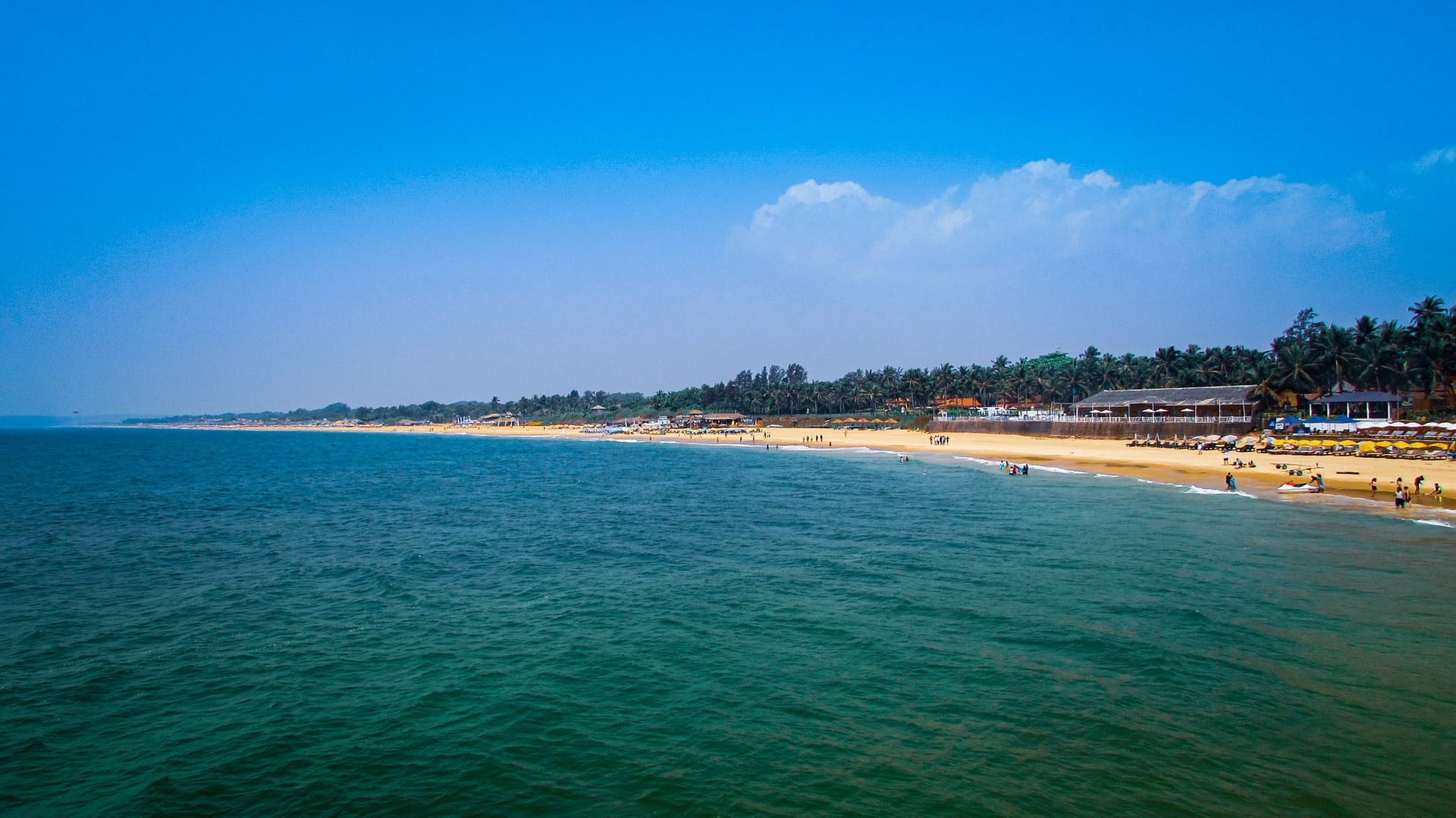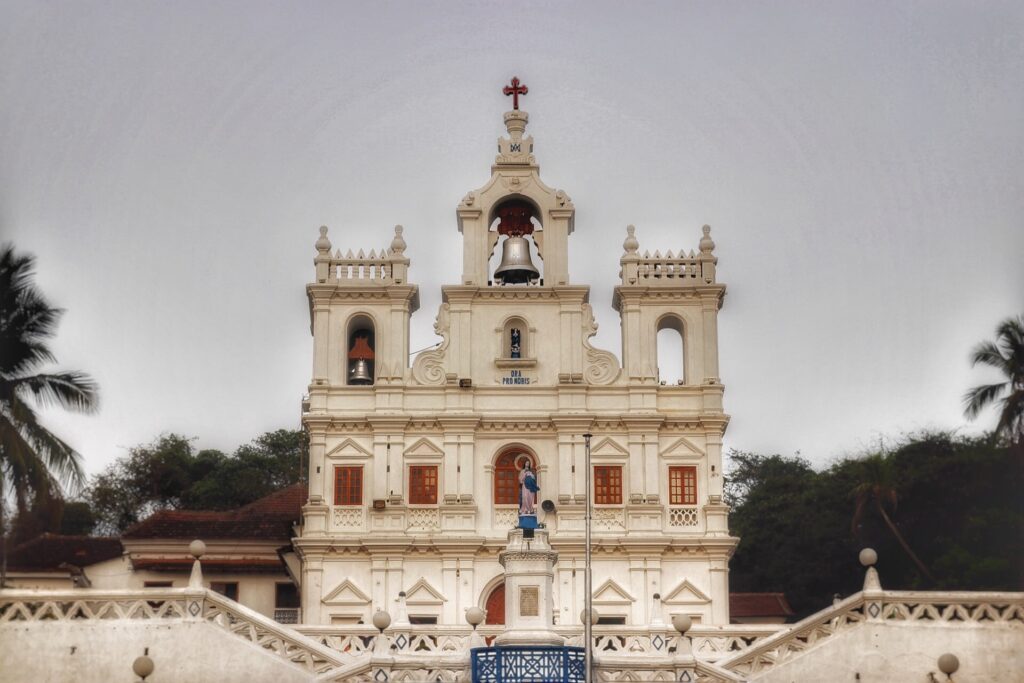
Goa Tour Package
Goa Tour Package: Travel to Goa exploring main attractions in Nort and South Goa such as Fort aududa , Taj Sikerrium , Baga Beach , Calangute Beach , Anjuna beach , Vagator Beach.

General Information:
Goa is a state on the southwestern coast of India within the region known as the Konkan, and geographically separated from the Deccan highlands by the Western Ghats. It is surrounded by the Indian states of Maharashtra to the north and Karnataka to the east and south, with the Arabian Sea forming its western coast. It is India's smallest state by area and its fourth-smallest by population. Goa has the highest GDP per capita among all Indian states, two and a half times as high as the GDP per capita of the country as a whole. The Eleventh Finance Commission of India named Goa the best-placed state because of its infrastructure, and India’s National Commission on Population rated it as having the best quality of life in India.
History:
Rock art engravings found in Goa are the earliest known traces of human life in India. Goa, situated within the Shimoga-Goa Greenstone Belt in the Western Ghats (an area composed of meta volcanic, iron formations and ferruginous quartzite), yields evidence for Acheulean occupation. Rock art engravings (petroglyphs) are present on laterite platforms and granite boulders in Usgalimal near the west-flowing Kushavati river and in Kajur. In Kajur, the rock engravings of animals, tectiforms and other designs in granite have been associated with what is considered to be a megalithic stone circle with a round granite stone in the centre. Petroglyphs, cones, stone-axe, and choppers dating to 10,000 years ago have been found in various locations in Goa, including Kazur, Mauxim, and the Mandovi-Zuari basin. Evidence of Palaeolithic life is visible at Dabolim, Adkon, Shigao, Fatorpa, Arli, Maulinguinim, Diwar, Sanguem, Pilerne, and Aquem-Margaon. Difficulty in carbon dating the laterite rock compounds poses a problem for determining the exact time period.
Religion:
According to the 2011 census, in a population of 1,458,545 people, 66.1% were Hindu, 25.1% were Christian, 8.3% were Muslim and 0.1% were Sikh.
Geography:
Goa encompasses an area of 3,702 km2 (1,429 sq mi). It lies between the latitudes 14°53′54″ N and 15°40′00″ N and longitudes 73°40′33″ E and 74°20′13″ E.
Tourism:
Tourism is generally focused on the coastal areas of Goa, with lower tourist activity inland. In 2010, there were more than 2 million tourists reported to have visited Goa, about 1.2 million of whom were from abroad. As of 2013, Goa was a destination of choice for Indian and foreign tourists, particularly Britons and Russians, with limited means who wanted to party.
Goa stands 6th in the Top 10 Nightlife cities in the world in National Geographic Travel. Notable nightclubs in Goa include Chronicle, Mambos, and Sinq.
One of the biggest tourist attractions in Goa is water sports. Beaches like Baga and Calangute offer jet-skiing, parasailing, banana boat rides, water scooter rides, and more. Patnem beach in Palolem stood third in CNN Travel's Top 20 Beaches in Asia.
Over 450 years of Portuguese rule and the influence of the Portuguese culture presents to visitors to Goa a cultural environment that is not found elsewhere in India. Goa is often described as a fusion between Eastern and Western culture with Portuguese culture having a dominant position in the state be it in its architectural, cultural, or social settings. The state of Goa is famous for its excellent beaches, churches, and temples. The Bom Jesus Cathedral, Fort Aguada and a new wax museum on Indian history, culture and heritage in Old Goa are other tourism destinations.
The Velhas Conquistas regions are known for Goa-Portuguese style architecture. There are many forts in Goa such as Tiracol, Chapora, Corjuem, Aguada, Reis Magos, Nanus, Mormugao, Fort Gaspar Dias and Cabo de Rama.
In many parts of Goa, mansions constructed in the Indo-Portuguese style architecture still stand, though, in some villages, most of them are in bad condition. Fontainhas in Panaji has been declared a cultural quarter, showcasing the life, architecture, and culture of Goa. Influences from the Portuguese era are visible in some of Goa's temples, notably the Shanta Durga Temple, the Mangueshi Temple, the Shri Damodar Temple and the Mahalasa Temple. After 1961, many of these were demolished and reconstructed in the indigenous Indian style.
Museums and science centre
Goa has three important museums: the Goa State Museum, the Naval Aviation Museum, and the National Institute of Oceanography. The aviation museum is one of three in India (the others are in Delhi and Bengaluru). The Goa Science Centre is in Miramar, Panaji. The National Institute of Oceanography, India (NIO) is in Dona Paula. Museum of Goa is a privately owned contemporary art gallery in Pilerne Industrial Estate, near Calangute.
source: https://en.wikipedia.org/wiki/Goa
Hope you enjoy with our customized Goa Tour Package.....
Check out other Goa Packages here https://indiantravelsbooking.com/destination/?q=goa
Day 1 : Goa Pickup
Pickup from Airport Railway Station Drop to Hotel
Day 2 : North Goa Sightseeing
Places to Visit-Fort aududa , Taj Sikerrium , Baga Beach , Calangute Beach , Anjuna beach , Vagator Beach... night stay at hotel.
Day 3 : South Goa Sightseeing
Old Goa Church Mangeshi Temple Merra mar Beach Dauna Paula Pajim Maker Evening Boat Cruise..night stay at hotel.
Day 4 : Goa Depart
Drop to Airport | Railway station.
Transportation:
CAR Goa Airport / Railway Station To Goa Sightseeing
CAR Goa To Goa Airport / Railway Station
Accomodation:
Inclusions
Accommodation in well appointed room
Meals as per Hotel plans
All transfer & sightseeing as per the itinerary in individual vehicle
Parking fee & driver allowances
All applicable taxes
Exclusions
Any Airfare / Train fare
Expenses caused by factors beyond our control like rail and flight delays, roadblocks, vehicle mal-functions, political disturbances etc.
Any monument entry fees / camera fees.
Any extra meals & Alcoholic beverages
Any guide charges.
Anything not mentioned under 'Package Inclusions'